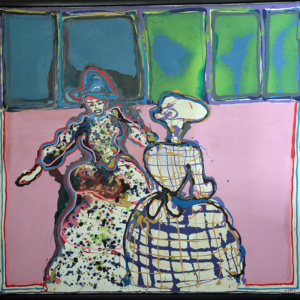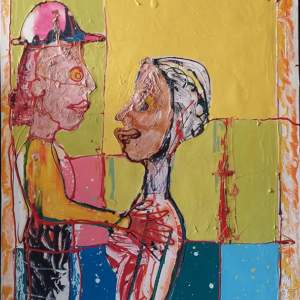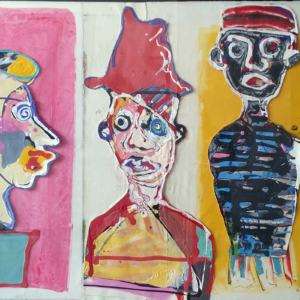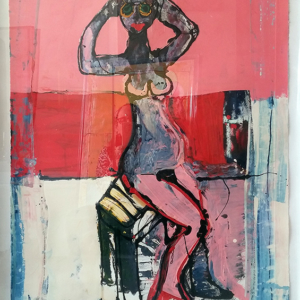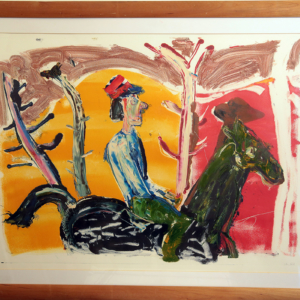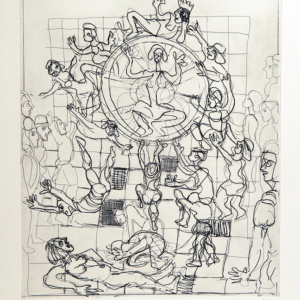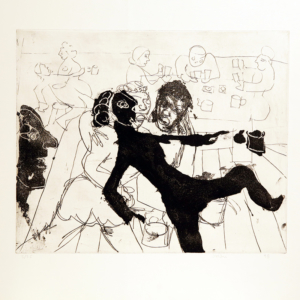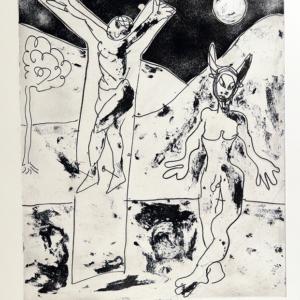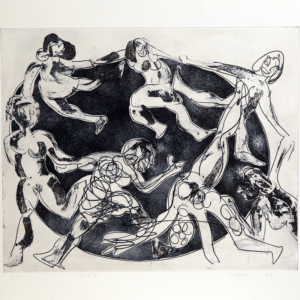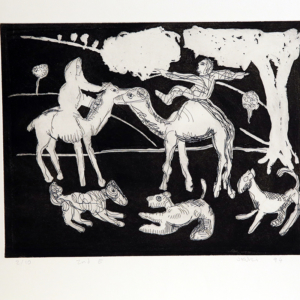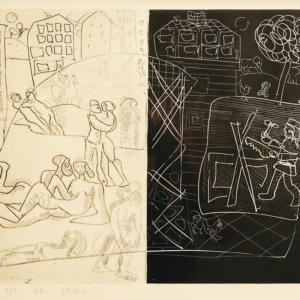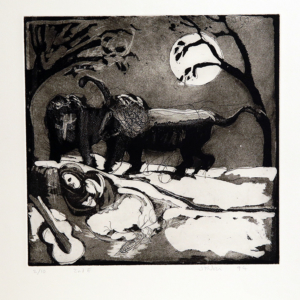John Kiki
John Kiki’s figures are loosely delineated by the wiry spaghetti lines which serve both to fix them onto the canvas, and to give them a vibrancy and mobility against a background, typically, of flat planes of colour. He paints rapidly, canvases spread out on the floor. He insists that “the subject matter doesn’t matter; There is no message.”
Kiki hails originally from Cyprus and although he paints the classical myths, his upbringing in Great Yarmouth, England (where he still lives) has been more important to his art than the Mediterranean. The slightly louche vigour of the seaside town, the razzle-dazzle of the funfair, the bright lights and the bustling movement of the seafront and piers have fed into his imagery. These qualities and the passion to recreate the intensity of the spontaneous experience are apparent in his work.
He studied at the Camberwell School of Arts (1960-64) under Auerbach, Procktor and Uglow and graduated from the Royal Academy Schools (1964-1967). By the time he finished his studies in 1967, he had developed a unique style, a fusion between figurative painting, abstraction and Pop Art. The Academy were so impressed by his work that when they opened a new gallery to exhibit work by former students in 1972, Kiki was given the very first exhibition there.
Between 1992 and 1994 he worked on the Carmina Burana Experience, a project commissioned by Art Esprit. Most of the etchings in the current exhibition are part of the Carmina Burana series.
The British artist’s long career has included shows in celebrated galleries such as the Royal Academy, the Tate, Hayward, Barbican, and Serpentine in London, the OK Harris Gallery in Soho, New York and the Galerie Wahrenberger in Zurich. The influences on his work are many and varied. There are elements of Jackson Pollock, Francis Bacon, Matisse, Euan Uglow, de Kooning, Baselitz, Picasso, the abstract expressionists.
However, the “greatest and most lasting influence” is, in his own words, his teacher, Frank Auerbach, who, together with pop artist Patrick Procktor, made him “rethink his strategy,” to develop from the tight, measured style of his early work, into the looser, fluid style which currently typifies his work.

Artwork by John Kiki
-
Two Ladies
Oil on canvas
John Kiki

